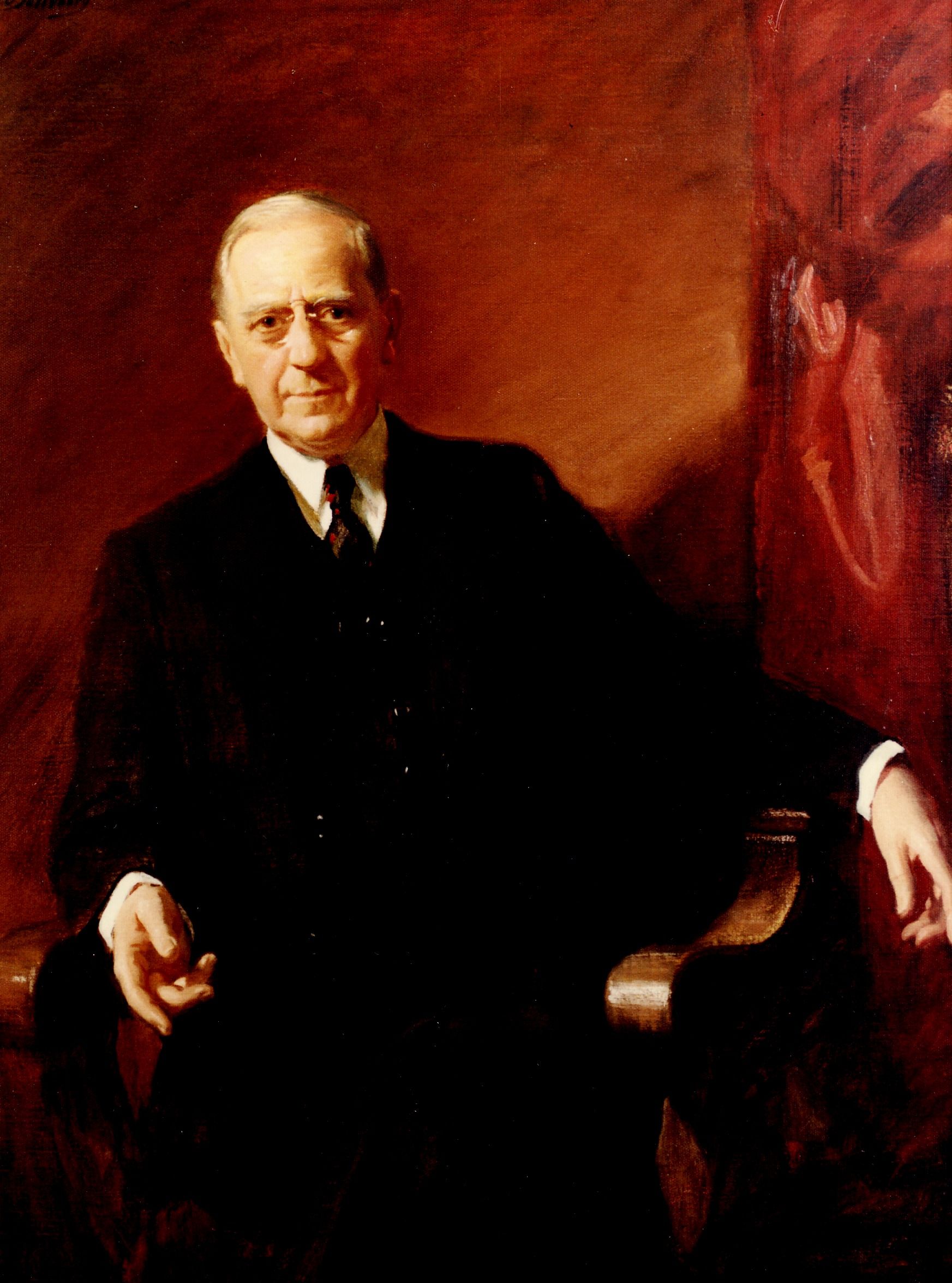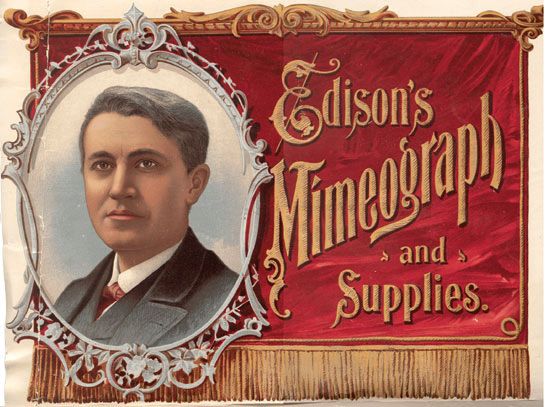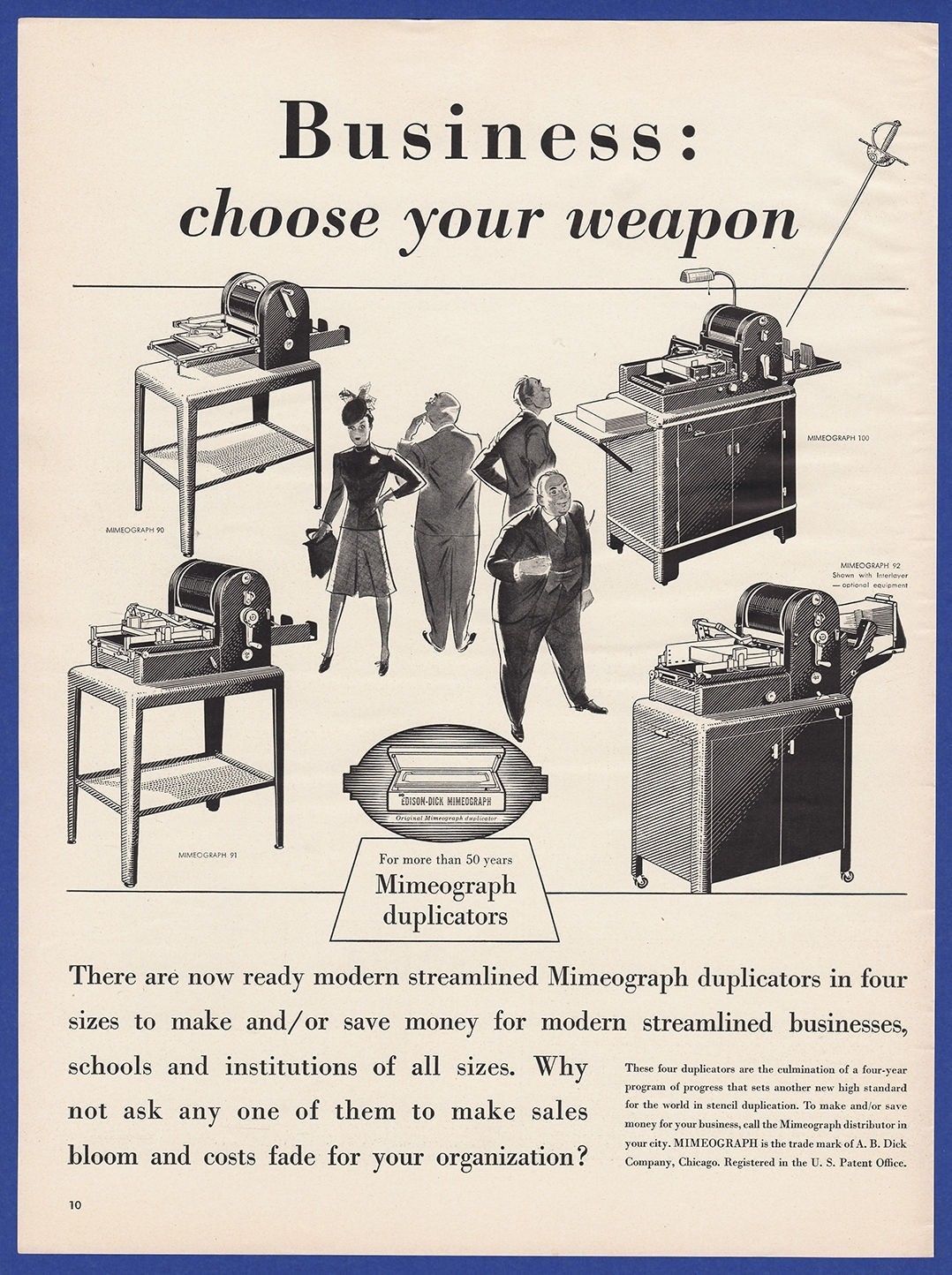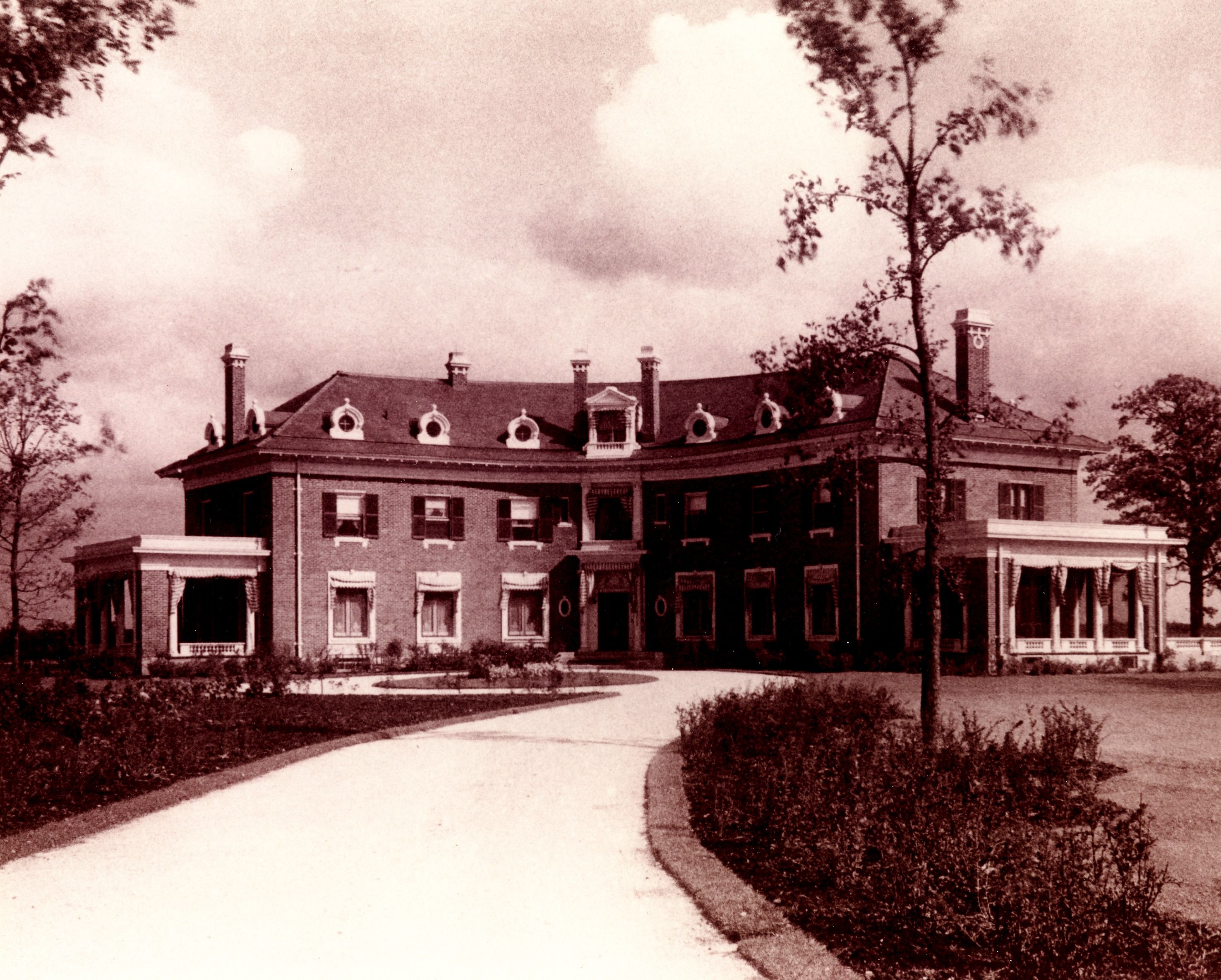Changing the Office Forever: A. B. Dick
Albert Blake Dick (1856-1934), inventor of the mimeograph, was born in Bureau County, Illinois. After working for farm equipment and lumber companies, he established his own Chicago-based lumber enterprise, A. B. Dick Company in 1884. Mr. Dick soon abandoned the lumber business to turn his full attention to the mimeograph - a duplicating machine that produces copies from a stencil (precursor to the photocopier). At the time of his death in 1934, the Edison-Dick mimeograph had become virtually indispensable to every kind of public and private institution.

A. B. Dick discovered the beginnings of the mimeograph process one day as he drew a tool across a piece of wax paper and created a stencil. He soon used this process to duplicate price change notices for his lumber business. He applied for a patent, only to find that Thomas Edison had received a patent for an electric pen that performed a similar, but more cumbersome, process. Mr. Dick contacted Thomas Edison who gave him a license under the electric pen patent. A. B. Dick marketed his product as the “Edison Mimeograph,” using a name with star value combined with the Greek word meaning “to imitate.” Thomas Edison and A. B. Dick became lifelong friends.

The mimeograph process used a wax paper stencil that was scored by hand or the strokes of a typewriter. The machine became popular because it was much cheaper than traditional print--neither typesetting nor skilled labor were needed. One individual with a typewriter and mimeograph became his own printing factory.
By 1900, the A. B. Dick Company was selling its duplicating machines throughout America. By the 1920s, it was the preeminent supplier of such machines across the globe. The A. B. Dick Company continued to improve and automate the process. Mimeograph reproduction was the preferred office method of copying from a master copy until electrostatic copiers were introduced in the 1960s.

A. B. Dick married Alice S. Mathews of Galesburg, Ohio, in 1881 and they had a daughter, Mabel. After Alice’s death, he married her sister Mary Henrietta Mathews and they had four sons. In 1902, A.B. and Mary built a forty-acre summer estate near Deerpath and Waukegan Road, called Westmoreland. The main house, designed by James Gamble Rogers in the French Renaissance style, had 20 rooms, many of which looked out onto a pergola and gardens.
